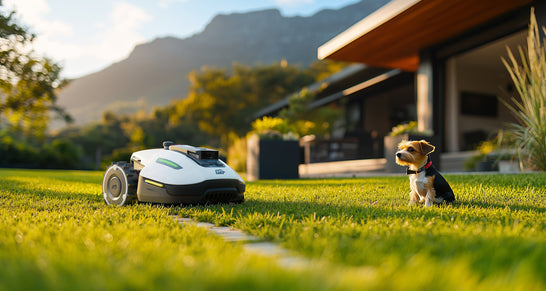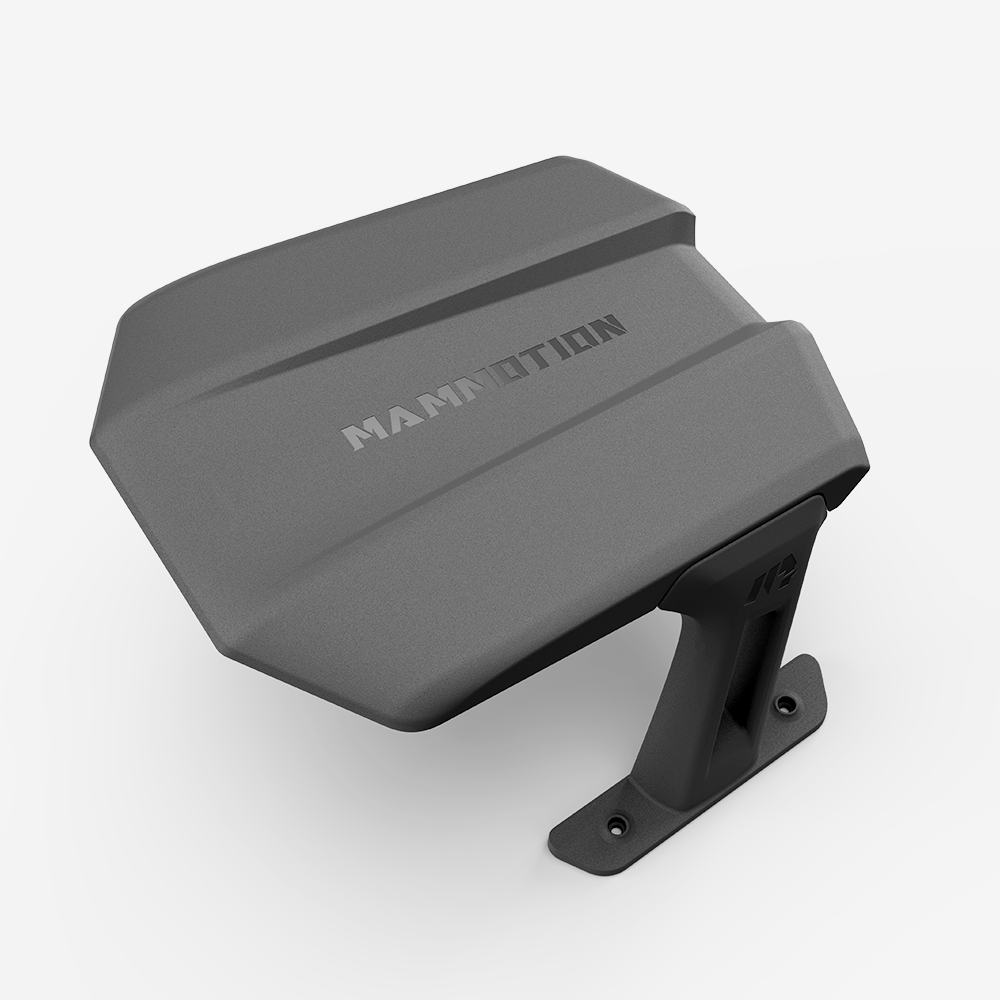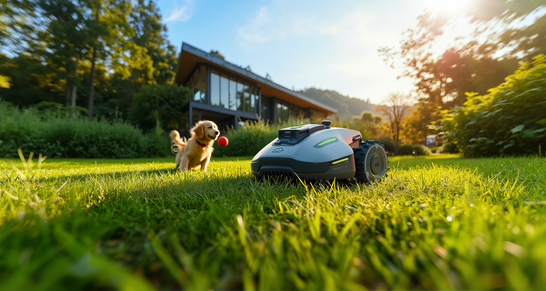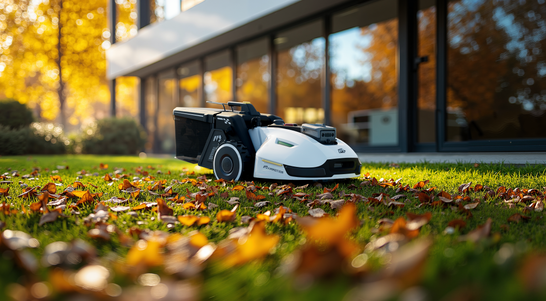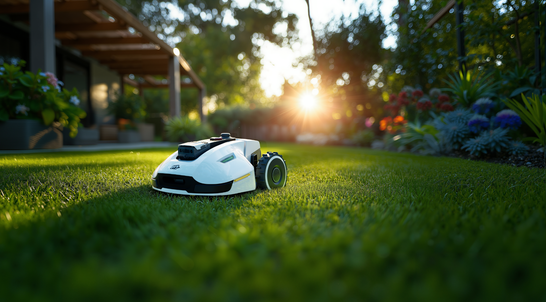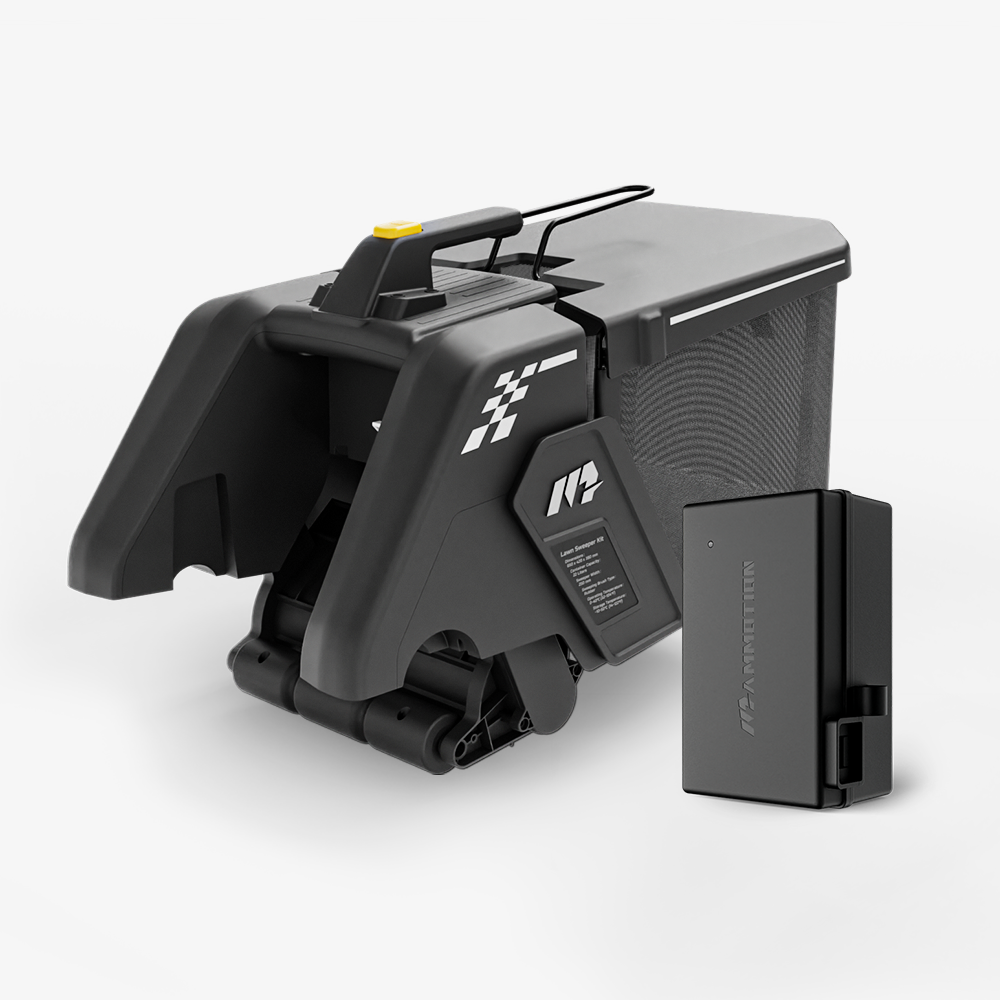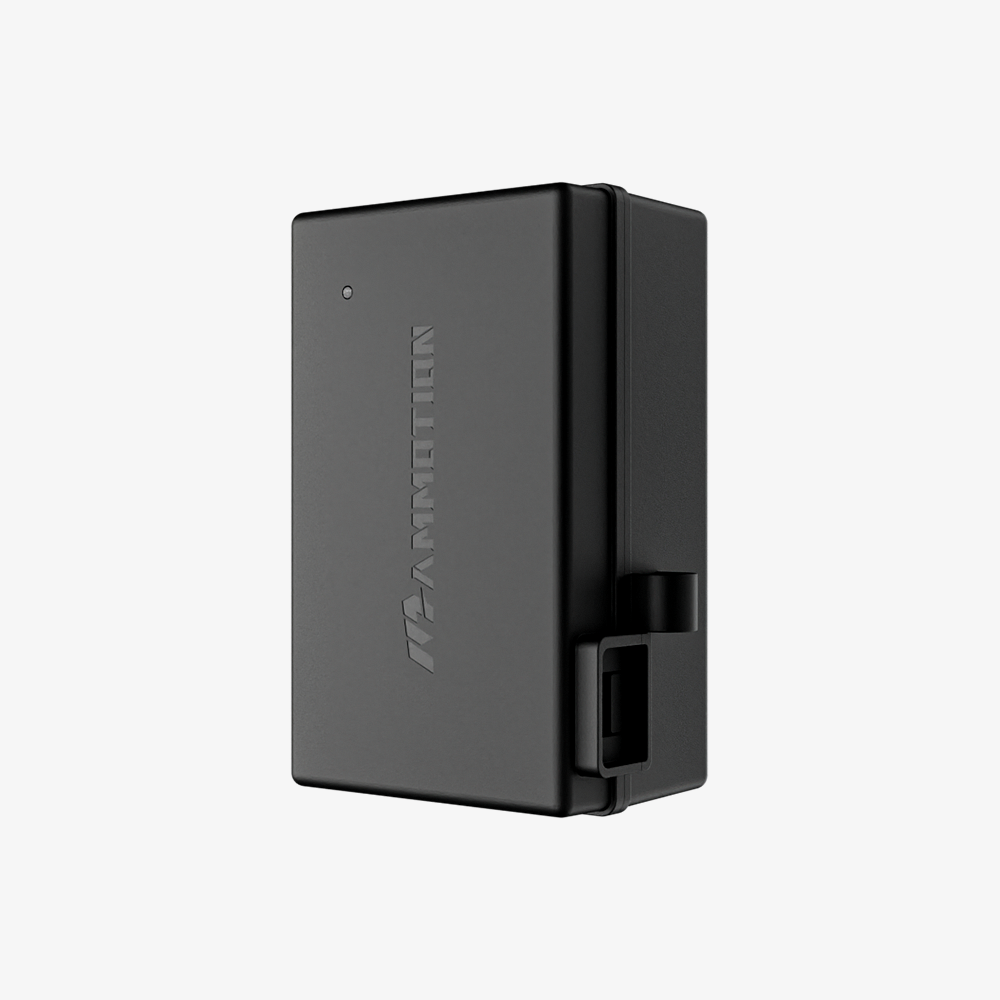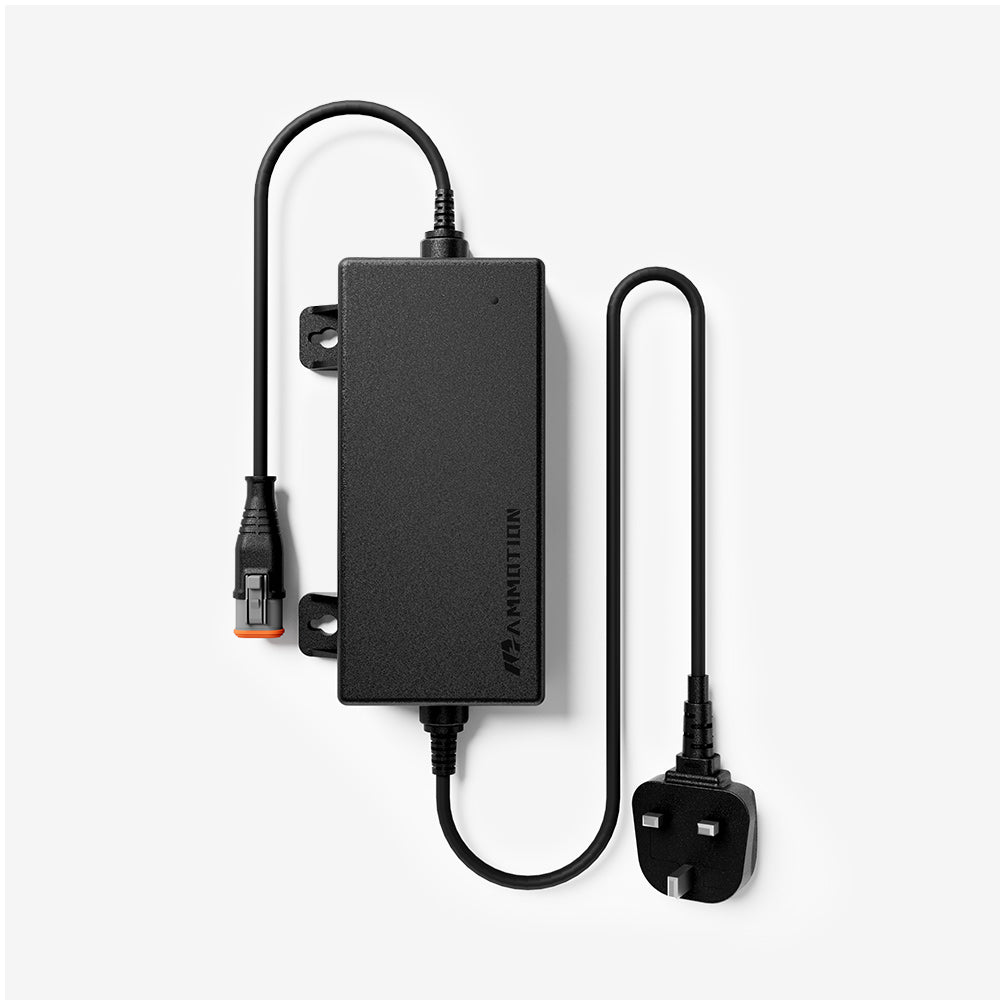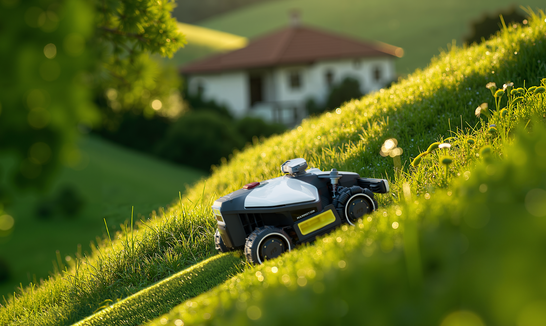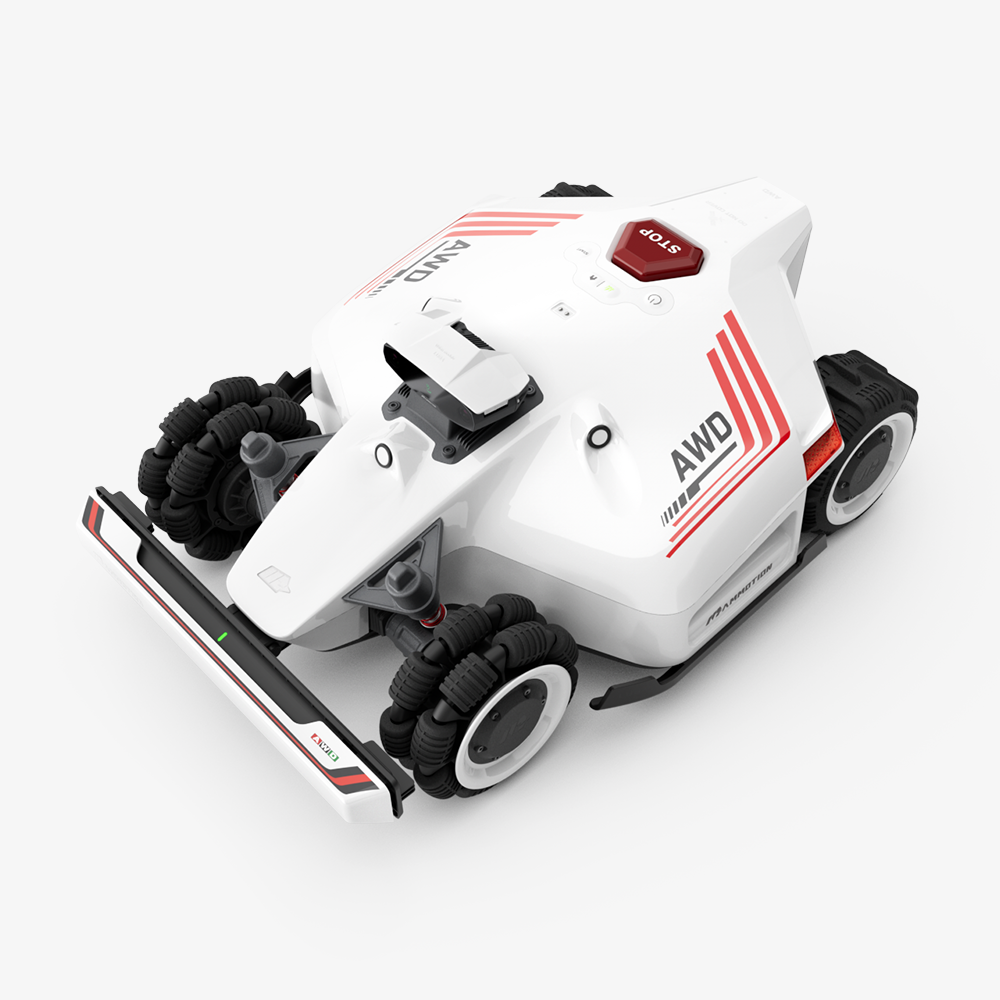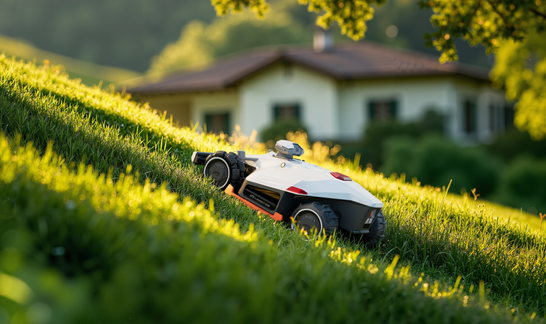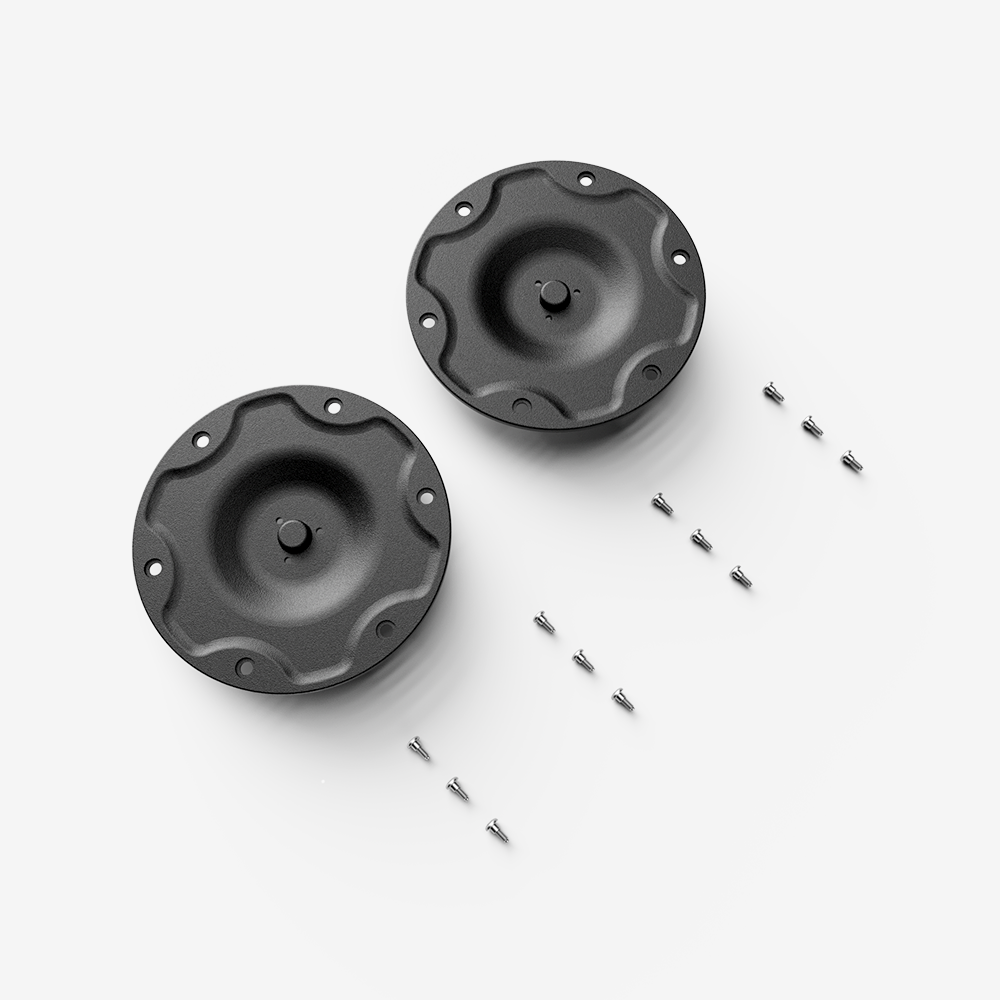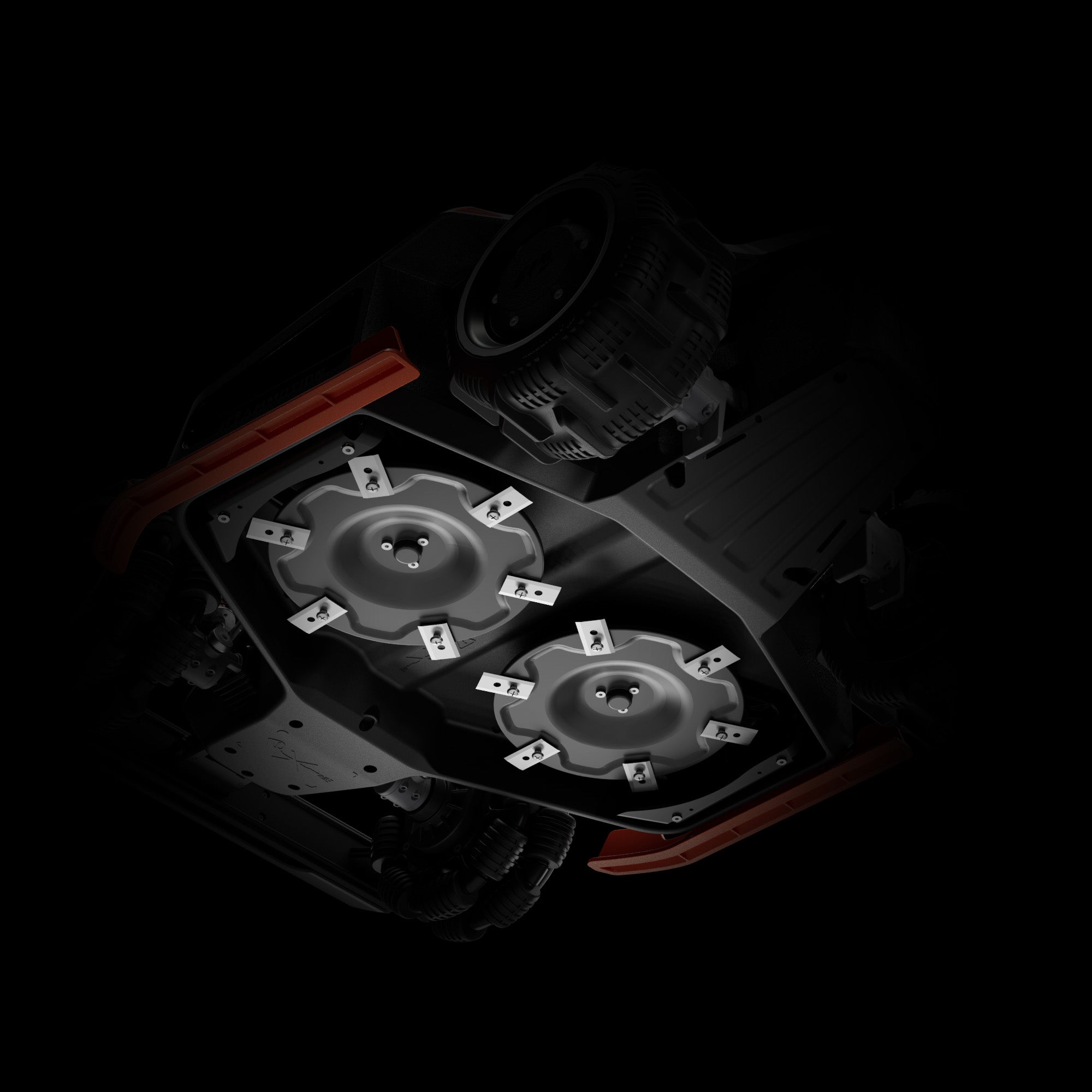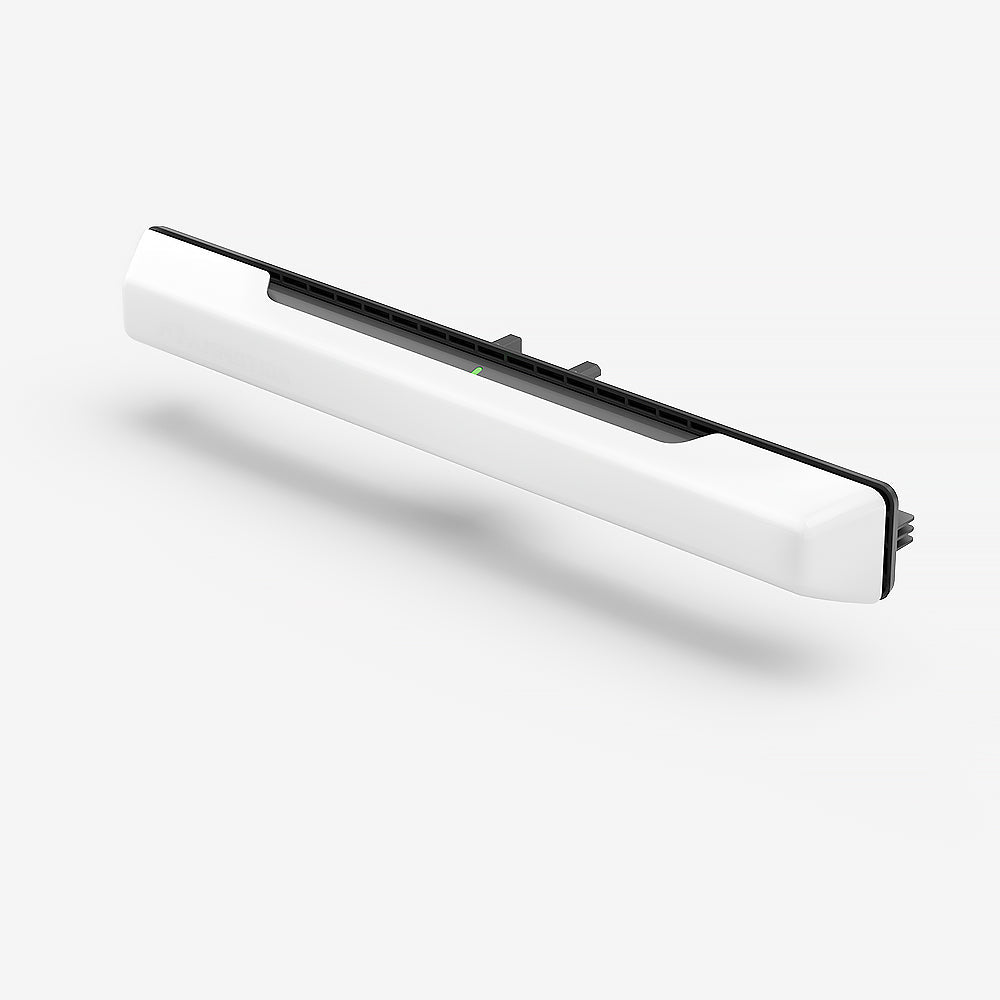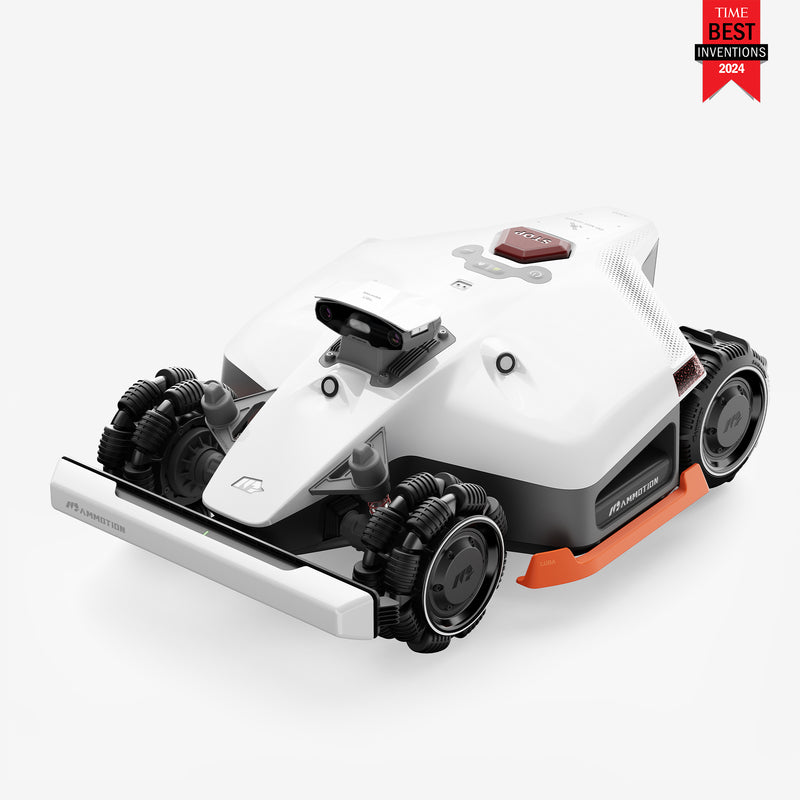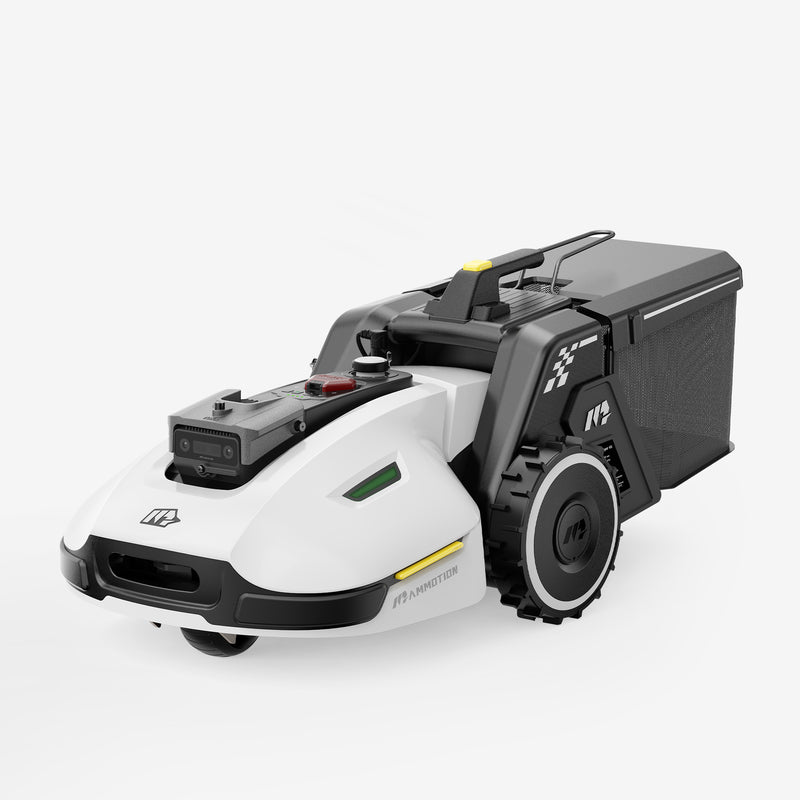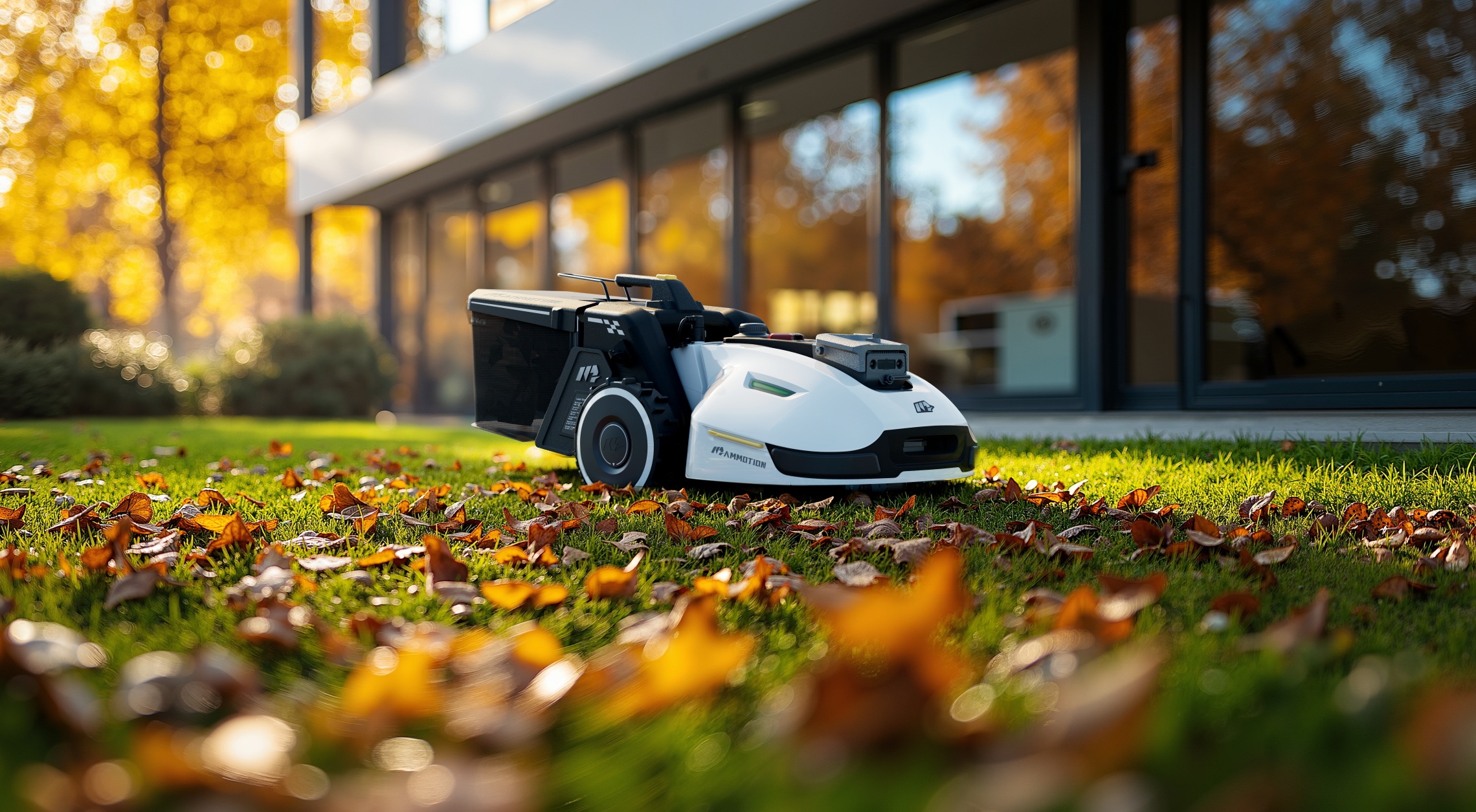Robotic lawn mowers are quickly becoming a top choice for homeowners who want a hands-free, low-maintenance solution to keeping their lawns neat and healthy. These high-tech devices promise to save time, reduce effort, and improve lawn quality — all while operating quietly and efficiently.
But with robotic mower prices ranging from a few hundred to several thousand dollars, the big question remains: Are robotic mowers really worth the investment for your home?
In this guide, we’ll explore everything you need to know — from the benefits of robotic lawn mowers, to their potential downsides, maintenance costs, and long-term value. Whether you're tired of pushing a noisy mower every weekend, or you're simply curious about the latest in automated lawn care technology, this article will help you make an informed decision.
What Are Robotic Mowers and How Do They Work?
Robotic lawn mowers are smart, battery-powered devices designed to automatically cut your grass without manual effort. Using advanced sensors, GPS mapping, and AI-driven algorithms, they navigate your yard, avoid obstacles, and deliver precise, efficient cuts — all on their own.
Unlike traditional mowers, robotic mowers are whisper-quiet and emission-free, making them an eco-friendly and low-maintenance alternative. Most models, like the Mammotion LUBA 2 AWD robotic mower, don’t even require boundary wires, thanks to advanced wireless navigation systems.
How Do Robotic Mowers Work?
Here's a breakdown of how robotic mowers operate:
Smart Mapping & Navigation
Most robotic mowers, including the Mammotion LUBA 2 AWD, use high-precision navigation systems to map out your lawn. With the help of technologies like UltraSense AI Vision, Mammotion LUBA 2 mowers can identify obstacles, differentiate between grass and non-grass areas, and efficiently plan their mowing path.
High-Speed Cutting Blades
Instead of bulky rotary blades, robotic mowers use small, ultra-sharp spinning blades that trim grass more precisely and encourage healthier lawn growth.
Automatic Charging
Most robotic mowers use lithium-ion batteries and return to their charging station automatically when power runs low—no supervision needed.
Built-in Safety Features
Advanced safety systems stop the mower if it’s lifted or tilted, and detect pets, kids, and garden furniture to prevent accidents..
The Cost of Robotic Mowers: Is It Worth the Investment?
One of the most common concerns homeowners have about robotic mowers is their cost. Unlike traditional mowers, robotic mowers require a higher upfront investment. However, the overall expense includes more than just the purchase price. Let’s break down the various cost factors to give you a clear picture of what to expect.
1. Initial Purchase Price
The initial cost of robotic lawn mowers can vary significantly based on the model, features, and brand. For those looking for an affordable option, basic robotic mowers can start as low as £600. However, for those seeking advanced technology, such as AI-driven navigation and all-wheel drive, high-end models like the Mammotion LUBA 2 AWD can range between £1,500 and £3,000.
2. Installation and Setup
Depending on the type of robotic mower you purchase, installation costs can vary. Most conventional robotic mowers require boundary wires to be laid around the perimeter of your lawn. This process can be time-consuming and costly, especially for larger or more complex lawns. But now most modern robotic mowers have wireless navigation systems, which don't need boundary wires. This makes installation much simpler and saves you both time and money.
3. Maintenance and Operational Costs
Once set up, robotic lawn mowers are relatively low maintenance compared to traditional gas-powered mowers. Here’s a breakdown of the key maintenance and operational costs you can expect:
- Blade Replacements: Like all lawnmowers, robotic mowers need periodic blade replacements for optimal cutting performance. Blade replacements typically cost between $20–$50 per set, depending on the model and frequency of use.
- Battery Replacement: The lithium-ion batteries in most robotic mowers generally last around 3–5 years before they need replacing. New batteries cost approximately $100–$300, but this is a one-time expense that doesn’t occur often.
- Software Updates: Many high-quality robotic mowers, such as those from Mammotion, provide over-the-air (OTA) software updates that help improve mower performance, fix bugs, and even introduce new features. These updates are typically free of charge, meaning no extra expense beyond the initial setup.
- Electricity Costs: Robotic mowers are energy-efficient, and charging the device is inexpensive. On average, the annual electricity cost for running a robotic mower is minimal, usually just a few dollars per year depending on usage frequency.
Conclusion: Long-Term Cost-Effectiveness
While the upfront cost of robotic mowers may be higher than that of traditional lawnmowers, their low maintenance requirements and operational savings often make them a cost-effective solution over the long term. With minimal maintenance, no fuel costs, and energy-efficient operation, many homeowners find that the convenience and savings offered by a robotic lawn mower justify the initial investment.
Top Benefits of Robotic Lawn Mowers
Thinking about upgrading your lawn care routine? Here’s why more homeowners are switching to robotic mowers—and why it might be the smartest decision for your yard.
1. Save Time with Fully Automated Lawn Care
Robotic lawn mowers work on their own, giving you back your weekends. Once programmed, they follow a set schedule and mow consistently—no pushing, pulling, or supervision required. Whether you're at home or away, your grass stays neat and trimmed.
2. Healthier Lawns with Frequent Mulching
Unlike traditional mowers, robotic mowers trim your grass in small increments on a frequent basis. This process, called continuous mulching, helps return nutrients to the soil, strengthens root systems, and leads to a thicker, greener lawn over time—naturally reducing weeds and bald patches.
3. Eco-Friendly and Quiet Operation
Battery-powered and whisper-quiet, robotic mowers produce zero emissions while cutting grass. They’re a sustainable alternative to gas-powered models, making them ideal for environmentally conscious homeowners. Plus, they can mow day or night without disturbing your neighbors.
4. Built-In Safety and Obstacle Detection
Worried about pets, kids, or garden furniture? Modern robotic mowers, like the Mammotion LUBA 2 AWD, come with advanced obstacle detection systems and AI-powered sensors that recognize over 100 types of objects. They’re designed to avoid hazards and stop cutting when lifted or tilted—keeping everyone safe.
5. Long-Term Cost Savings
While the upfront cost may be higher, robotic mowers help reduce long-term lawn care expenses. No gas, fewer repairs, less need for fertilizers, and low maintenance costs make them a smart investment over time. Plus, they extend the health of your lawn, potentially reducing landscaping fees.
Potential Drawbacks of Robotic Mowers
While robotic mowers provide impressive convenience and efficiency, they’re not without their downsides. Here are some of the most common drawbacks to consider before making a purchase.
1. High Initial Cost
Robotic lawn mowers often come with a premium price tag. Advanced models with AI-driven navigation, app control, and obstacle detection can cost between $1,500 to $3,000. For many homeowners, this upfront investment can feel steep, especially compared to traditional push or riding mowers.
2. Limited Cutting Capacity
Basic robotic mowers are typically designed for small to medium-sized lawns. Larger properties or those with complex layouts, steep slopes, or dense vegetation may require high-end models. Even then, certain areas might still need manual touch-ups.
3. Navigation Challenges
Despite modern improvements, robotic mowers may still struggle in environments with tight corners, narrow passages, or frequent obstacles like garden furniture, trees, or flower beds. Performance may vary depending on the navigation system used.
4. Ongoing Maintenance and Repairs
Though they’re low-maintenance compared to gas-powered alternatives, robotic mowers still require routine care—blade changes, battery replacements, software updates, and occasional troubleshooting. Repairs, particularly for high-tech models, can also be costly if not covered by warranty.
5. Weather Dependency
Most robotic mowers perform best in dry conditions. While premium models are rain-resistant, consistent wet weather can still interfere with cutting performance or cause the mower to get stuck or delay mowing schedules.
Are Robotic Mowers Worth It?
So, are robotic lawn mowers worth the money, or are they just an expensive gimmick? The answer depends on your lawn size, terrain complexity, personal time constraints, and whether you're looking for long-term value or short-term savings. Let’s explore the key considerations.
Who Should Consider Buying a Robotic Mower?
Robotic mowers are best suited for homeowners who:
- Own medium to large-sized yards, especially those with mild slopes or uneven ground.
- Want a hands-free mowing experience and prefer not to spend weekends managing their lawn.
- Value a healthier lawn through regular, light mowing and mulching.
- Are looking for eco-friendly lawn care alternatives with no gas emissions.
- Want a mower that can navigate complex lawns without boundary wires, like the Mammotion LUBA 2 AWD.
- Are tired of dealing with robot mower stuck issues or boundary wire setups, and want smarter navigation.
Comparing Cost and Value
You might be asking: why are robotic mowers so expensive? The answer lies in their advanced features—AI navigation, safety systems, and automatic charging, among others. While the upfront price for a high-end unit like the LUBA 2 AWD can reach £2,000–£3,000, the robot lawn mower cost comparison shows that long-term savings often outweigh the investment.
Here’s where value shines:
- No fuel or oil costs
- Minimal robotic mower maintenance
- Blade replacements only every few months
- No need to hire professional landscapers
- Reduced fertilizer use thanks to built-in mulching
- With regular use, most homeowners recover their investment within 2–3 years.
Pros vs. Cons – Is It Worth the Investment?
To determine if a robotic mower is a smart purchase for you, weigh the following pros and cons of robot lawn mowers:
Pros:
- Saves time and effort
- Improves lawn health
- Reduces noise and pollution
- Works even on sloped or uneven terrain (with AWD models)
Cons:
- High initial price
- Potential for occasional robotic mower repair issues
- Not all models are weatherproof; some struggle in heavy rain or wet grass
- Budget units may lack performance for larger or complex yards
For homeowners who want maximum efficiency with minimal hassle, especially those dealing with challenging landscapes, a model like the Mammotion LUBA 2 AWD offers high return on investment thanks to its terrain adaptability and wireless control.
How to Choose the Best Robotic Lawn Mower for Your Needs
With so many brands and models available, it’s easy to feel overwhelmed. The best robotic mower for your lawn depends on several factors, including lawn size, terrain, and desired features. Here's a comprehensive guide to help you pick the right one.
1. Consider Your Lawn Size and Terrain Type
Not all robotic mowers are built the same. The best robotic lawn mower for large yards will differ significantly from one made for small suburban lawns.
- Small Lawns (under 500 m²): Affordable, entry-level models work well.
- Medium to Large Lawns (500–5,000 m²): Go for models with stronger motors, longer battery life, and GPS-assisted navigation.
- Uneven or Sloped Terrain: Opt for models with all-wheel-drive (AWD) systems and multi-zone mowing support—like the Mammotion LUBA 2 AWD.
2. Navigation: Boundary Wire or Wireless?
There are two main types of navigation systems in robotic mowers:
- Boundary Wire Mowers: Common in budget and mid-range models. They require a physical wire setup and are better suited for static lawn shapes.
- Wireless Robotic Mowers: Use GPS or vision-based systems to detect lawn boundaries and obstacles without wires. For example, the LUBA 2 AWD uses NetRTK + Vision for precise mapping.
3. Cutting Performance and Blade System
Look for these when evaluating cutting systems:
- Sharp, durable blades for clean, consistent cuts
- Adjustable cutting height to suit different grass types and seasons
- Frequent mulching capability to naturally fertilize the lawn
- Auto-scheduling for daily trimming
4 .Battery Life, Charging, and Runtime
A good robotic mower should efficiently manage its own charging. Most quality models use lithium-ion batteries, which are:
- Long-lasting (3–5 years)
- Fast-charging
- Energy-efficient—many consume less than a few dollars' worth of electricity per month
- Check for automatic return-to-base functionality when the battery runs low.
5. Safety Features to Look For
Robotic mowers should have multiple safety mechanisms, especially for homes with pets or children:
- Obstacle Detection to avoid pets, toys, or garden furniture
- Lift and Tilt Sensors to shut off the blades instantly if the mower is moved
- Emergency Stop Button for manual intervention
6. Smart Features and App Control
Modern mowers are getting smarter every year. Look for:
- Mobile App Integration to schedule, pause, or adjust settings remotely
- GPS tracking and anti-theft alerts
- OTA (over-the-air) firmware updates
These features can greatly enhance convenience and peace of mind.
7. Price, Warranty, and Brand Support
Compare features-to-price ratios—some models offer premium features at mid-range prices
- Look for a solid warranty (2–3 years minimum)
- Check for active customer support and available spare parts
- While the robotic lawn mower price can range from £600 to £3,000, a good balance between cost and features ensures you get value for money.
4444
Conclusion: Is a Robotic Lawn Mower a Good Investment?
After evaluating the pros, cons, and total cost of ownership, it’s clear that robotic lawn mowers can be a smart long-term investment for many homeowners. While the upfront price may seem steep, the benefits in convenience, efficiency, and lawn health often outweigh the initial cost.
So, are robotic mowers worth the money? For many homeowners, the answer is a definite yes. They offer a hands-free, eco-friendly approach to lawn care that enhances your property’s appearance while saving you time.
If you're ready to ditch the weekly chore and upgrade to a smarter system, a robotic mower with advanced navigation and smart features could be one of the best lawn care decisions you’ll ever make. Models like the Mammotion LUBA 2 AWD stand out as top choices, offering cutting-edge technology and reliable performance.
Frequently Asked Questions
1. What is a robotic mower?
A robotic mower is an automated lawnmower that operates independently to trim your grass. It uses advanced sensors, GPS technology, and intelligent algorithms to navigate your lawn, avoiding obstacles and ensuring efficient mowing. These devices are typically battery-powered and designed for quieter operation compared to traditional gas-powered mowers.
2. How does a robotic mower work?
Robotic mowers use sensors and software to map and navigate your lawn. They can detect obstacles, differentiate between grass and non-grass areas, and plan their mowing paths accordingly. They operate on rechargeable batteries, and once the battery is low, they return to their charging station, recharge, and resume mowing until the task is complete.
3. How much does a robotic mower cost?
The cost of a robotic mower varies depending on the model, brand, and features. Basic models can start at around £600, while premium models with advanced features like wireless navigation and AI-driven technology can range from £1,500 to £3,000.
4. Are robotic mowers worth the money?
While robotic mowers require a higher initial investment, they can be worth it in the long run due to their low maintenance and cost savings on fuel, fertilizers, and lawn care products. The convenience and improved lawn health they offer make them a valuable investment for many homeowners, especially for larger or complex lawns.
5. What are the maintenance costs of a robotic mower?
Maintenance costs for robotic mowers are relatively low compared to traditional mowers. Regular maintenance includes:
- Blade replacements, which cost around $20–$50 per set.
- Battery replacement, typically needed every 3–5 years, costing $100–$300.
- Software updates are usually free with many premium models.
- Electricity costs for charging are minimal, typically just a few dollars per year.
6. Do robotic mowers require installation?
Yes, installation can vary depending on the model. Some older models require boundary wires to be installed around the lawn's perimeter, which can be time-consuming and costly. However, many modern robotic mowers feature wireless navigation systems, eliminating the need for boundary wires and making installation much simpler and more cost-effective.
7. What are the benefits of robotic mowers?
Robotic mowers offer several benefits, including:
- Time-saving convenience, as they operate independently and reduce manual mowing time.
- Improved lawn health, thanks to frequent mulching, which returns nutrients to the soil.
- Environmental benefits, since they are battery-powered and produce zero emissions.
- Safety features like obstacle detection to avoid pets, children, and furniture.
8. Are there any drawbacks to using robotic mowers?
Some potential drawbacks of robotic mowers include:
- High initial cost, especially for advanced models with AI and wireless navigation.
- Limited cutting capacity for larger, more complex lawns, though high-end models like the Mammotion LUBA 2 AWD are designed for larger areas.
- Navigation challenges in areas with steep slopes or narrow passages.
- Weather dependency, as most mowers perform best in dry conditions, and excessive moisture may affect their performance.
9. How long do robotic mowers last?
The lifespan of a robotic mower depends on the model, but on average, they can last 5–10 years with proper maintenance. Key components like the battery may need replacement every 3–5 years, but software updates and blade replacements help maintain the mower's efficiency.
10. Can robotic mowers handle complex lawns?
Yes, certain models, such as the Mammotion LUBA 2 AWD, are specifically designed to handle complex lawns with features like all-wheel drive, AI-driven navigation, and the ability to navigate uneven terrain. For smaller or simpler lawns, budget-friendly models may suffice.
11. Can robotic mowers work in the rain?
Most robotic mowers are designed to operate in light rain, but excessive moisture or heavy rainfall can impact their performance. It's generally recommended to allow the mower to run during dry conditions for optimal results.
12. How do I choose the best robotic mower for my lawn?
When selecting a robotic mower, consider the following factors:
- Lawn size: Larger or more complex lawns may require premium models like the Mammotion LUBA 2 AWD.
- Navigation system: Decide between boundary wire models or wireless navigation systems.
- Cutting performance: Look for features like adjustable cutting height and efficient mulching.
- Battery life and charging efficiency: Choose models with longer battery life and automatic recharging features.
- Safety features: Ensure the mower has obstacle detection and lift/tilt sensors for safety.
13. Are robotic mowers eco-friendly?
Yes, robotic mowers are eco-friendly as they are powered by rechargeable batteries, producing zero emissions during operation. They are a much greener alternative to gas-powered mowers, which emit pollutants into the air.


